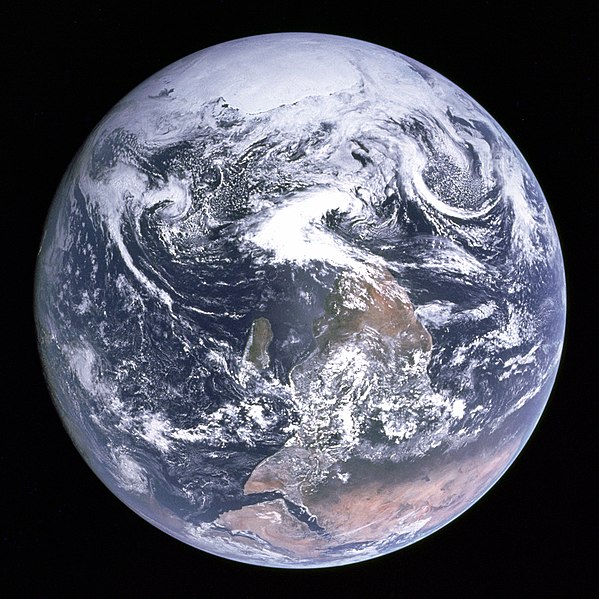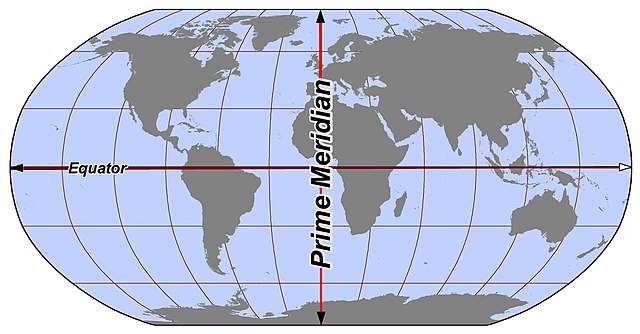The Southern Hemisphere is the half (hemisphere) of Earth that is south of the Equator. It contains all or parts of five continents and four oceans, as well as New Zealand and most of the Pacific Islands in Oceania. Its surface is 80.9% water, compared with 60.7% water in the Northern Hemisphere, and it contains 32.7% of Earth's land.
Aurora australis appearing in the night sky of Swifts Creek, 100 km (62 mi) north of Lakes Entrance, Victoria, Australia.
Aurora australis appearing from Stewart Island/Rakiura in the south of New Zealand.
A photo of Earth from Apollo 17 (Blue Marble) with the south pole at the top and the continent of Africa
In geography and cartography, hemispheres of Earth are any division of the globe into two equal halves (hemispheres), typically divided into northern and southern halves by the Equator or into western and eastern halves by the Prime meridian. Hemispheres can be divided geographically or culturally, or based on religion or prominent geographic features. Use of these divisions is applied when studying Earth's geographic distribution, cultural differences, and other geographic, demographic and socioeconomic features.
The division of Earth by the Equator and the prime meridian




